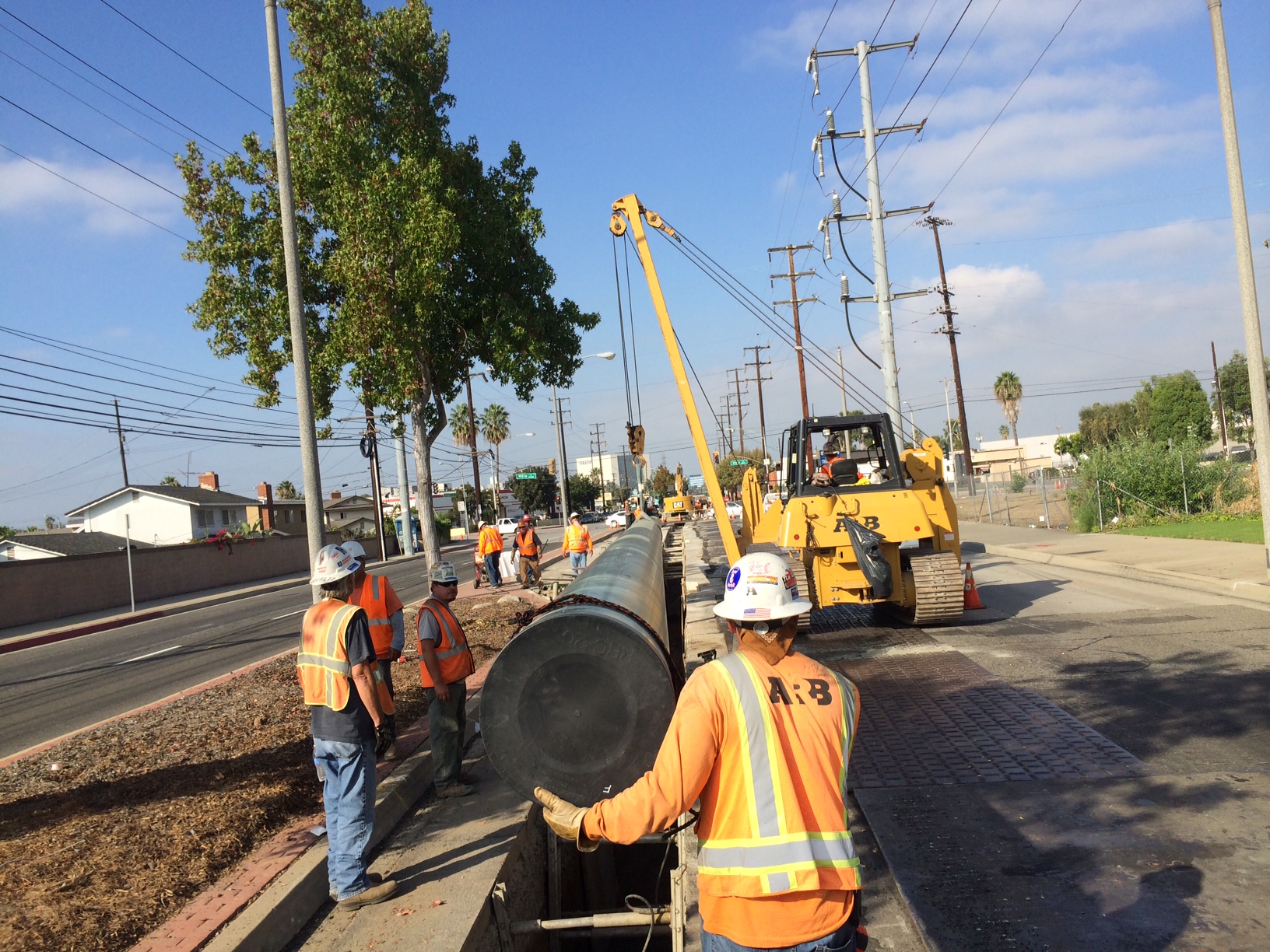October 2015, Vol. 242, No. 10
Features
SoCalGas Engages Stakeholders Early, Often in Pipeline Safety Projects

In the current phase of the pipeline safety enhancement plan (PSEP), SoCalGas and San Diego Gas & Electric will test and replace about 1,000 miles of pipe throughout the system.
While much of the construction work takes place in fairly remote locations, a significant portion is found in busy populated areas. Whether the work is in cities or unincorporated counties, in urban or rural space, customers and the local community are affected. Long before we received approval for PSEP, we knew community and customer outreach would be a critical factor for success.
The California Public Utilities Commission (CPUC) approved SoCalGas’ and SDG&E’s joint plan on June 12, 2014. The PSEP work is in response to new requirements adopted by California and the CPUC to enhance the safety of California’s natural gas transmission pipeline system.
PSEP is one of the largest pipeline safety projects in the United States. As required by the CPUC, all natural gas pipelines in our transmission system that have not already been tested, or do not have adequate records of a pressure test, will be tested or replaced.
The ongoing phase of PSEP calls for SoCalGas to hydrostatically pressure test or replace about 243 miles of transmission pipelines in populated areas, replace pipelines that were installed before 1946 and cannot be inspected using smart pigging technology, and retrofit over 500 valves to be automatically or remotely controlled.
Safety is, and always has been paramount at SoCalGas and SDG&E, so our safety plan will enhance the integrity of our system and further protect our customers and employees. Safety is a core value that we demonstrate through action and investment.
Over the next five years, SoCalGas is investing nearly $1.6 billion to improve the safety, performance and reliability of our pipeline system and infrastructure. Our plan also is expected to create more than 1,800 jobs and generate over $1.9 billion in economic activity based on direct, indirect and supporting services in Southern California.
SoCalGas Facts
• SoCalGas has been delivering clean, safe and reliable natural gas to its customers for over 140 years.
• It is the nation’s largest natural gas distribution utility, providing service to 21.4 million consumers connected by 5.9 million meters in over 500 communities.
• The service territory encompasses about 20,000 square miles throughout central and southern California, from Visalia to the Mexican border.
• SoCalGas is a regulated subsidiary of Sempra Energy, a Fortune 500 energy services holding company based in San Diego.
Reaching Out to Community
On every PSEP project, SoCalGas creates and implements targeted communication and outreach processes to educate and prepare all stakeholders; mitigate effects of construction, and address community concerns.
Our targeted communications run wide and deep, beginning with local communities, cities, elected and government officials, such as public works, city managers, city councils, county supervisors and staff, local media, and other key stakeholders, including schools, hospitals and businesses. We follow up these efforts with communications to local businesses, often in partnership with community-based organizations and chambers of commerce.
Several weeks before construction begins, SoCalGas alerts first-responders to alert them of where and when we’re working. At this time we also issue targeted press releases and contact our residential and commercial customers to let them know of any traffic impacts.
A typical timeline for how we notify the community surrounding the project:

Case Study from Central Coast
By anticipating potential concerns in the community about traffic delays and rerouting on a busy street in San Luis Obispo, the SoCalGas PSEP team was able to prevent potential public relations problems.
• In November 2014, the PSEP team began construction on the replacement of a section of pipeline on Higuera Street, a busy road that parallels the 101 freeway in the City of San Luis Obispo.
• Because the work was expected to take up to 16 weeks to complete, we anticipated public concern on reducing Higuera Street to one lane in each direction for several months.
• The team began reaching out to the community before work began, speaking with anyone who could influence public perception. A team of public affairs, media and community outreach and project managers met with affected business customers, school administrators and church leaders along the route, as well as homeowners’ associations. The team sent pre-notification letters to customers along the replacement route in October and also reached out to local media, particularly the San Luis Obispo Tribune, stressing that safety is our priority. (The Tribune offices happen to overlook the construction area.)
• A key issue we had to deal with was confusion in the media and community about other non-PSEP construction projects taking place in San Luis Obispo.
• The upshot is that reaching out early and often to the San Luis Obispo stakeholders worked. There was minimal negative reaction. All things considered, the project went very smoothly.
Stakeholder Engagement Takeaways
• Don’t spare the shoe leather – get out into the community and knock on doors.
• Start door-to-door outreach early, but keep in mind that people aren’t always home, and are likely to forget you were there earlier.
• Keep elected officials and appointed city and county staff up to speed.
• Answer customer concerns, questions and inquiries ASAP.
• Depending on the community, be sure to consider outreach to the community and media in multiple languages.
• Reach out to media and local organizations and brief them on the project – they can be a strong ally for getting the word out.
• For projects on heavily trafficked streets that involve lengthy construction periods, consider a local media availability at the actual worksite to explain the work being done and answer questions.
• Remember that you can’t over-communicate on projects like this – less is definitely not more; it takes a lot of time upfront to meet and talk with people about construction activity, but it saves having to react later, after work has begun.
Authors: Rick Phillips is the senior director for Southern California Gas Company and San Diego Gas & Electric’s Pipeline System Enhancement Plan, a $1 billion gas transmission pipeline rehabilitation project. He holds a bachelor’s degree from the University of Chicago Booth School of Business.
Joseph R. D’Anna is media and employee communications manager for Southern California Gas Company.

A SoCal worker makes the door-to-door rounds in an effort to inform the public.

Phillips

D’Anna





Comments